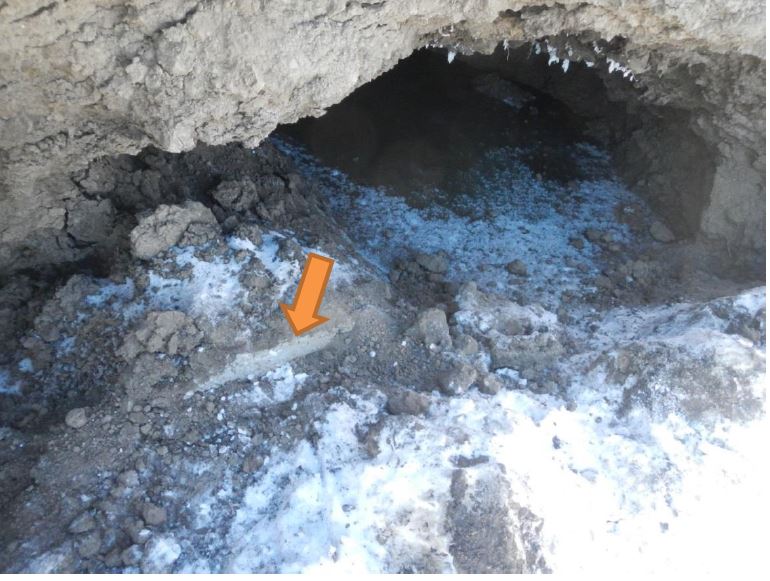Multiple Factors May Contribute to Internal Erosion Failures
Background: A dam in Montana failed due to internal erosion. The failure occured during a period of above average temperatures in mid-January. The snow melt caused a rapid first filling of the reservoir impounded by the newly reconstructed dam. In late January, a sink hole was noticed adjacent to the spillway tower and a significant amount of water was exiting through the embankment (estimated 5 to 10 cfs). Water was exiting the embankment through a void above the conduit at the downstream face and flowing into the stilling basin. Seepage developed as a result of: 1) Poor compaction around the drop inlet and vent pipe. 2) Freeze-thaw processes that reduced the fill density and increased permeability. 3) The filter sand placed as pipe bedding wasn't compacted, likely leading to settlement, which created an open space below the concrete that allowed seepage to flow freely. 4) Very little confining soil over the downstream filter resulted in a short seepage path that allowed seepage to exit through the filter sand.
Lessons Learned:
- Fill around vent pipe and drop inlet should be mechanically compacted.
- Filter sand should be compacted for horizontal blankets and vertical chimneys or diaphragms.
- The blanket drain should extend across the bottom of the foundation, below the conduit subgrade, instead of adjacent to the conduit, to allow for mechanical compaction and to provide more resistance to the progression of potential piping along the outlet conduit.
- Consideration should be given to reduce the potential for freezing of the embankment adjacent to the outlet conduit. One idea includes a flap gate at the downstream end of the conduit to reduce the movement of cold air through the conduit.
Revision ID: 970
Revision Date: 06/13/2022








